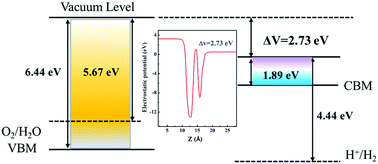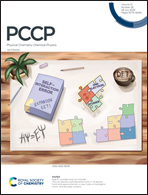Na-Based monolayer photocatalysts with an extremely high intrinsic electric-field for water splitting
Abstract
A strong built-in electric field, high carrier mobility and a wide range of optical absorption values are the key parameters for photocatalysts used in water splitting. The design and preparation of photocatalysts possessing simultaneously these characteristics have always been the main tasks in the water splitting field. Here, we report a new family of 2D Na-based photocatalysts, NaAB2 (A = Al, Ga, In; B = S, Se, Te) monolayers, which may achieve this goal. First-principles calculations show that most of the NaAB2 monolayers are semiconductors with a suitable direct band gap ranging from visible to near-infrared light, exhibiting good optical absorption. The electron mobilities of the NaAB2 monolayers are up to 103 cm2 V−1 s−1, meaning the rapid migration of electrons can promote photocatalytic overall water splitting. Importantly, the electrostatic potential differences between the top surface and the bottom surface are larger than 1.23 eV for all the studied NaAB2 monolayers, meaning a high intrinsic built-in electric field that is present in these Na-based photocatalysts can promote the overall water splitting irrespective of their band gaps and band edges. Our studies show that the NaAB2 monolayers may be ideal photocatalysts for use in water splitting and may initiate a new round of experimental studies.



 Please wait while we load your content...
Please wait while we load your content...